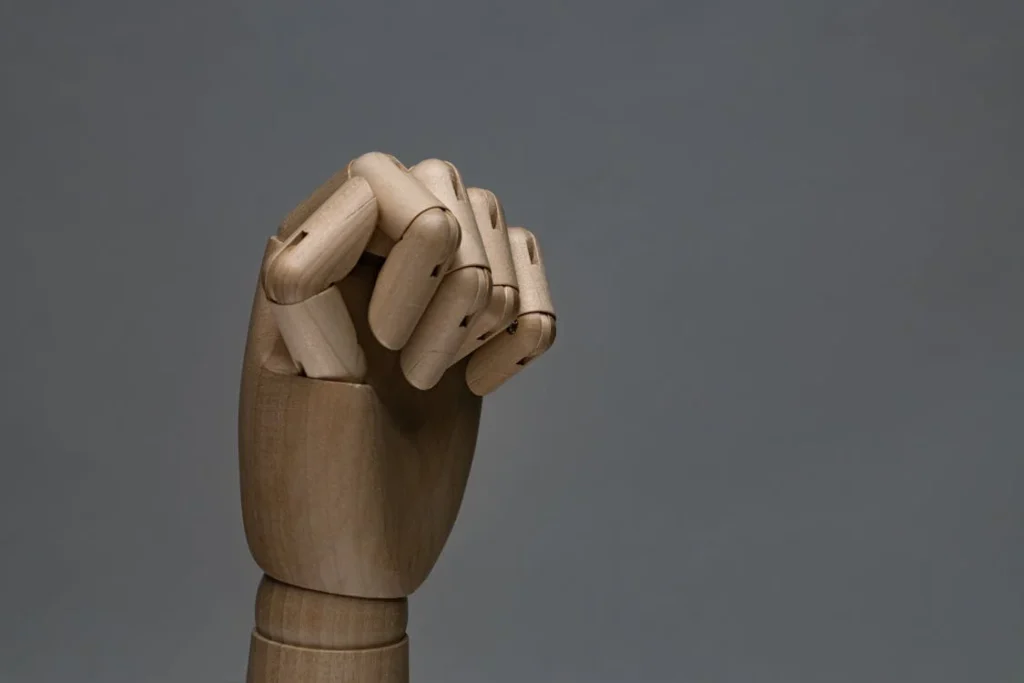Children grow fast. One month they’re learning to walk, and before you know it, they’re running, jumping, and climbing. But for children with limb differences who use prosthetics, growth adds a special kind of challenge.
A prosthetic limb is carefully shaped to match a child’s body. But when the body changes—when bones grow, muscles stretch, or height increases—the prosthesis may no longer fit the way it should. That’s why regular rechecks and adjustments are so important for young users. A good fit isn’t just about comfort. It affects how a child moves, plays, learns, and feels about themselves.
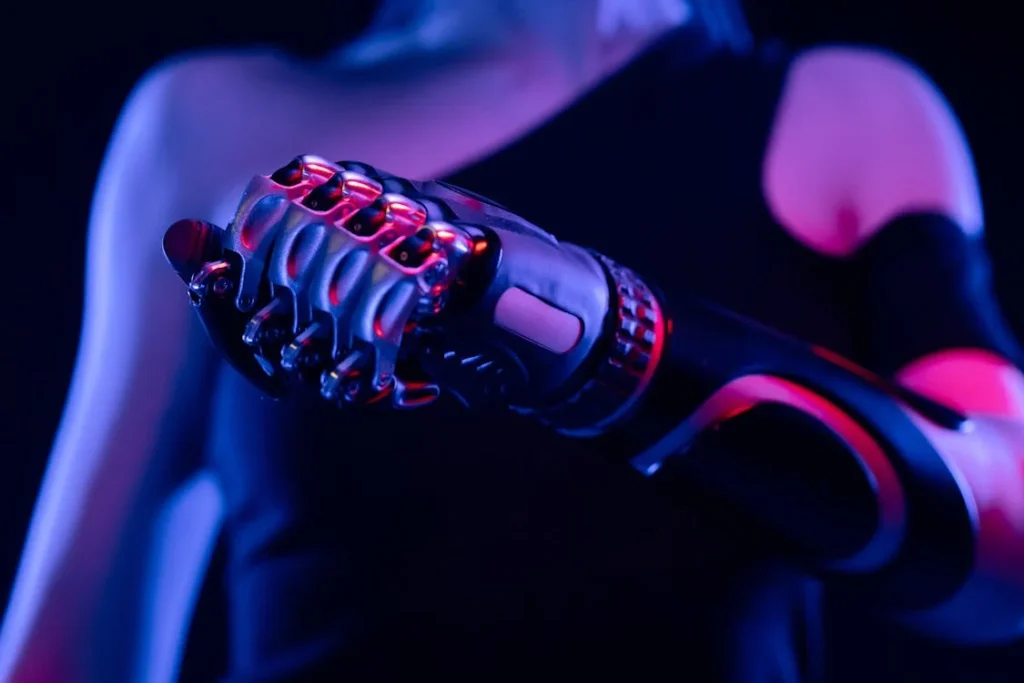
Understanding How Children Grow With a Prosthetic
Growth Is Constant, and So Are the Changes
In children, growth isn’t something that happens once a year—it’s happening all the time. Their arms and legs get longer, their muscles become stronger, and their bones change shape.
A prosthetic limb that fits perfectly today might feel tight or loose just a few months later. It might start to rub, slip, or stop supporting their body the right way.
Unlike adults, children don’t have a stable limb shape or size for long. Their residual limb—the part that fits into the prosthesis—is growing too. This growth can change the way the socket sits on the skin, how pressure is distributed, and how balanced they feel while walking or moving.
If these changes are not noticed and addressed early, they can cause more than just discomfort. They can affect posture, cause pain, or limit how active the child is.
That’s why regular check-ins with a prosthetist are not optional—they are essential to keeping kids healthy and mobile.
Poor Fit Affects More Than Just Movement
When a child’s prosthesis doesn’t fit well, they may start changing the way they walk or move to avoid pain. These small adjustments might seem harmless at first, but over time, they can lead to bigger problems.
Uneven walking can cause back or hip pain. A tilted posture can strain growing muscles. A wobbly fit can make them avoid certain activities altogether.
That discomfort also spills into the emotional side of things. If a child feels limited or awkward in their movement, it can affect how they see themselves.
They might become shy, pull away from group play, or feel frustrated when they can’t keep up with friends. Fitment isn’t just about the physical—it’s tied to confidence, independence, and social development too.
When a child has a prosthesis that supports them properly, they feel like they can do anything. They climb without fear, play without limits, and walk with pride. That feeling comes from having a prosthetic that fits right, grows with them, and adapts to their needs.
Common Signs the Fit May Be Off
Many parents notice when something’s wrong—but not always what’s causing it. Maybe their child is walking slower, avoiding certain movements, or complaining about pressure or itching.
Sometimes they outgrow socks and shoes faster than expected, which could mean the limb is changing too. These signs may seem small, but they’re often the first clues that the prosthesis needs attention.
Kids may not always explain their discomfort clearly. They might just say it “feels weird” or they “don’t want to wear it today.” It’s important to listen closely and look for patterns.
If a child is suddenly less active, more tired, or more sensitive after wearing their prosthesis, that could mean the fit needs a recheck.
Every child’s body is different, and every prosthetic must match that uniqueness—not just once, but again and again as they grow.
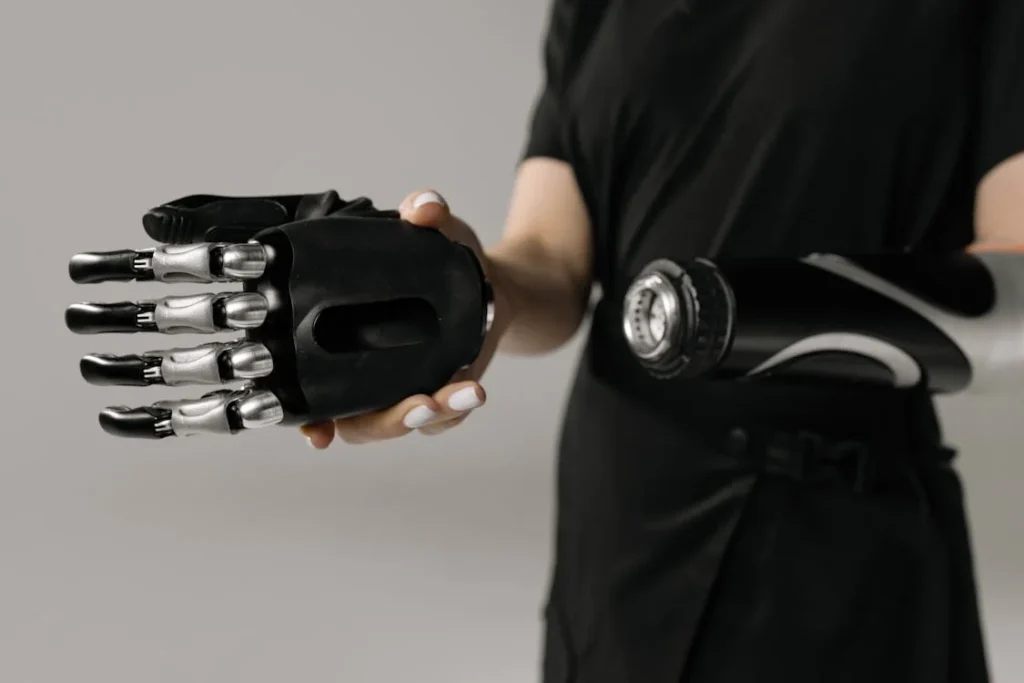
Why Regular Rechecks Are a Must for Growing Kids
The Body Changes, the Fit Must Follow
When a child grows, their bones don’t just get longer—they also shift in proportion. Their joints develop. Their muscles stretch. Even the shape of their skin and the way they carry their weight changes.
That means a socket that fit snugly a few months ago can suddenly press too hard in one place and leave too much space in another.
These small shifts can go unnoticed at first. But over time, they begin to affect everything: how the child walks, how balanced they feel, how they carry their backpack, or how they sit at school.
A socket that doesn’t match their shape anymore forces the body to make constant adjustments. These tiny corrections use up energy, wear the child out faster, and can even lead to injuries.
Rechecks are not about starting over. They’re about keeping up. A small adjustment, like reshaping a socket edge or adjusting the alignment, can restore that natural feeling again—where the prosthesis moves with the child, not against them.
How Often Should Rechecks Happen?
There’s no single rule that fits all, but most children need a professional recheck every three to six months. During growth spurts, more frequent visits might be needed.
A prosthetist will look at the limb, ask about any discomfort, observe walking patterns, and make sure the prosthesis is supporting the body correctly.
In some cases, a new liner or socket may be needed. In others, the existing setup can be adjusted slightly to improve comfort.
The key is not to wait until problems show up. Proactive care helps avoid setbacks and keeps the child active and confident.
Fitment checks are a bit like dental visits. Even if there’s no pain, regular check-ups can catch small issues early—before they grow into something more serious.
Supporting Developmental Milestones
Children pass through many milestones as they grow. They learn to walk, run, ride bikes, climb stairs, and more. Every stage brings new movements and different pressures on the prosthesis.
What worked well when they were crawling may not hold up as they start running.
Each new skill brings fresh demands. That’s why a prosthetic fit needs to evolve with those changes. A poorly fitted limb can hold a child back from learning key movements.
It can slow down their physical development or make certain activities frustrating or painful.
Proper fitment not only supports these physical changes—it helps the child feel more confident while exploring their world. When a prosthesis allows them to move freely, they’re more likely to try new things, take healthy risks, and engage with others.
That kind of active growth helps the whole child—not just their body, but their mind and social life too.
Comfort Builds Confidence
For young prosthetic users, comfort isn’t just about avoiding pain. It’s about feeling free enough to be themselves. A child who forgets they’re wearing a prosthesis is one who feels fully included.
They run with friends without worrying about falling behind. They focus on play, not pressure points. They get to be a kid.
This level of comfort only comes from attention to detail—specifically, attention to fitment. A good fit builds trust between the child and their prosthesis. It helps them understand that their device is something that supports them, not something they have to fight.
And when that trust is there, children begin to see their prosthesis not as a barrier, but as a part of their own strength. That sense of empowerment starts with a well-fitted limb—and it stays with them for life.
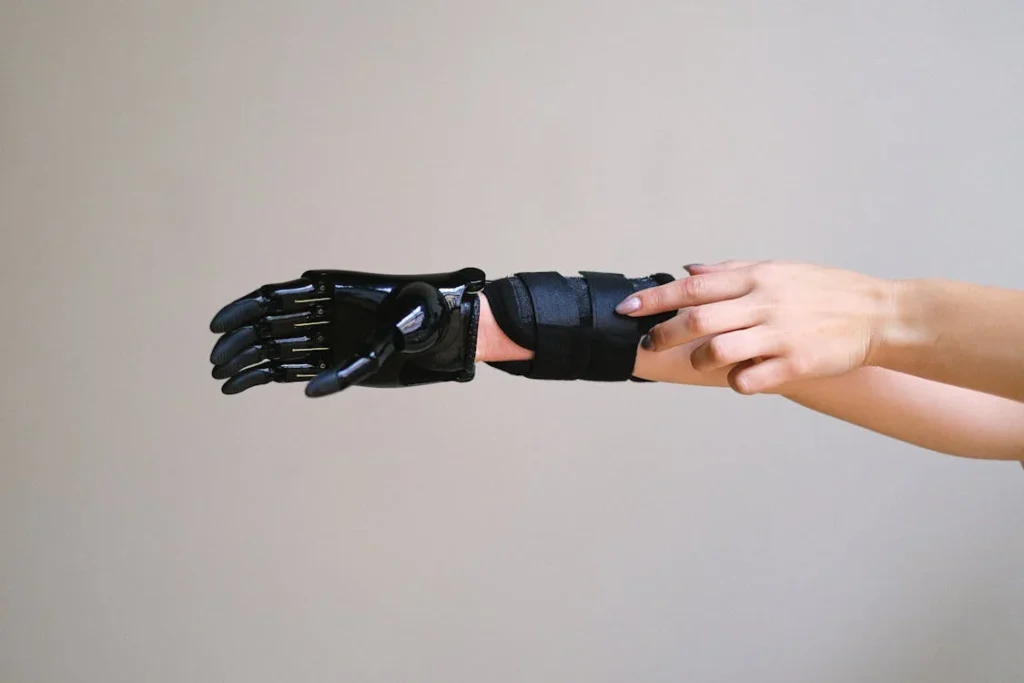
The Role of Parents and Caregivers in Monitoring Fit
What to Watch For at Home
While prosthetists handle the technical parts of fitment, parents and caregivers are the first to notice when something changes. They see how the child moves each day, how they react to putting on their prosthesis, and how their mood or energy shifts after physical activity.
This daily view makes them essential partners in keeping the fit comfortable and functional.
A child may not always say they’re in pain, but their behavior can speak volumes. Maybe they take longer to get ready in the morning. Maybe they ask to take their prosthesis off more often.
Maybe they sit out of games they used to love. These signs often show up before the child understands what’s causing the discomfort.
Checking the residual limb regularly is also important. Look for red spots, skin irritation, or any swelling. These can all be early indicators that the fit has changed.
Even if the limb looks fine, pay attention to how the child walks. Limping, dragging, or avoiding pressure on one side could mean something needs adjusting.
Parents should feel empowered to bring these concerns to their prosthetist. There’s no such thing as overreacting when it comes to a child’s health and comfort. A quick visit can often prevent weeks or months of discomfort.
Open Conversations Build Trust
Children often take emotional cues from their caregivers. If a parent treats prosthetic adjustments as a normal part of life, the child will too.
Creating a safe space where the child feels comfortable talking about their prosthesis encourages open communication. It helps them express when something doesn’t feel right and avoids long delays in getting help.
It also helps to ask questions that are simple and specific, especially for younger children. Instead of asking “Does it hurt?”, try asking “Does this part feel tight?” or “Is anything rubbing today?” These kinds of questions guide the child to think about their experience and give clearer answers.
As kids grow older, they can also learn how to check the fit themselves. Teaching them to feel for pressure points, clean their limb, or speak up about discomfort helps them build independence. This prepares them for a future where they can manage their prosthesis with confidence.
Routine Builds Security
Making rechecks a regular part of life takes away the stress that sometimes comes with clinic visits. If a child knows that every few months they’ll see their prosthetist, they begin to expect it like any other check-up. It becomes a natural rhythm.
This also helps avoid emergencies. Waiting too long between visits often leads to bigger adjustments—or worse, a completely unusable fit. With routine care, changes can be made gently and gradually, making it easier for the child to adapt physically and emotionally.
Parents can also keep a journal or note changes in activity, comfort, or behavior. This helps the prosthetist see patterns over time and make more accurate adjustments. The more information available, the better the outcome for the child.
Creating a Support System
Parents should not feel like they need to handle everything alone. A strong care team—including prosthetists, occupational therapists, rehabilitation experts, and school support staff—can help make sure the child stays on track. These teams work together to ensure the prosthetic not only fits physically but also works well in the child’s daily environment.
At Robobionics, we encourage families to stay closely connected with their prosthetic care team. Frequent check-ins, open communication, and a clear action plan make the journey smoother. Children thrive when their support system works together.
Even emotional support can make a difference. Talking to other families, joining local peer groups, or simply sharing stories can help parents understand that their experience isn’t unusual. Every child is different, but many families face the same worries and hopes.
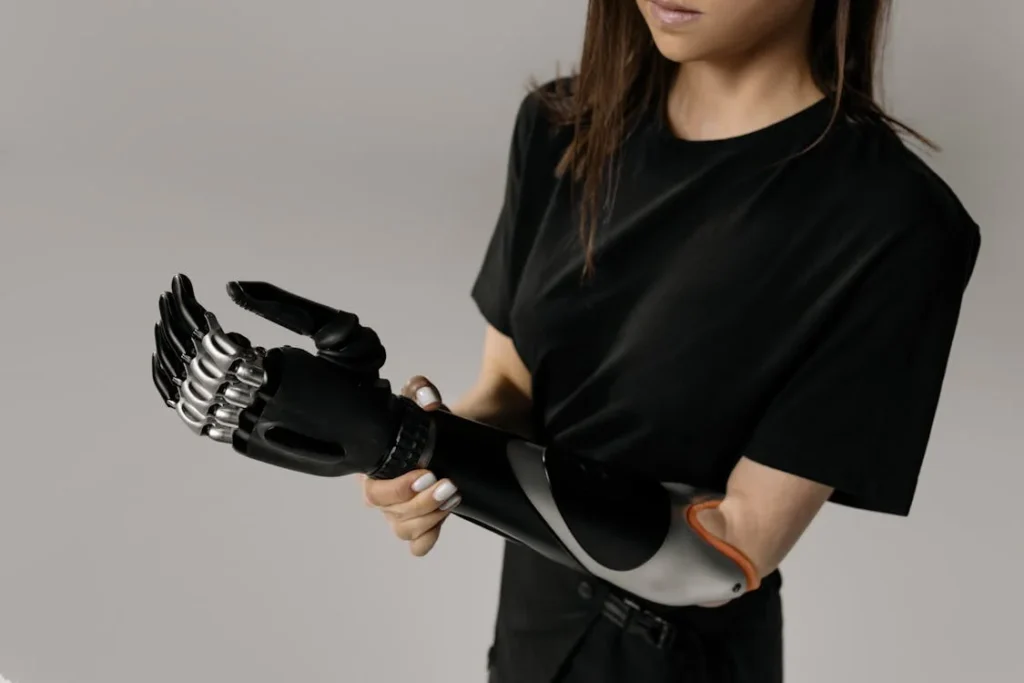
The Impact of Poor Fitment on Long-Term Development
When the Fit Isn’t Right, the Body Adapts in the Wrong Ways
Children are naturally adaptive. When something doesn’t feel right, their bodies instinctively adjust. They shift their weight, change how they step, or hold their posture differently without even realizing it.
While these small changes might help in the short term, they often lead to bigger problems later on.
A prosthesis that’s too tight may cause a child to lean away from the limb, creating stress on the opposite hip or knee. If it’s too loose, they may start dragging the limb or taking uneven steps.
Over time, these habits can change the way the bones and joints develop. This can lead to discomfort, slower motor skills, or even long-term alignment problems.
That’s why early correction matters. A well-fitted prosthesis allows the child to move naturally, with proper joint positioning and balance. It supports healthy growth and reduces the need for physical therapy or surgical intervention later.
Emotional and Social Effects Are Just as Real
While physical development is easy to see, the emotional impact of poor prosthetic fitment can be harder to notice—but just as serious. A child who feels limited or awkward in their movement might avoid playing with peers.
They might sit out of games or physical education at school, not because they don’t want to participate, but because they’re afraid of tripping or being seen as different.
Over time, this avoidance can lower self-esteem. The child may begin to see their prosthesis as something that holds them back instead of helping them move forward. That mindset can limit their potential far more than the limb difference itself.
Regular rechecks and timely adjustments help prevent this. When a child feels supported, comfortable, and free to move, they begin to see their prosthesis as a tool that helps them join in, not stay out.
This sense of belonging is vital for emotional growth and confidence.
School and Daily Activities Depend on Good Fitment
A poor-fitting prosthesis doesn’t just affect how a child walks—it can interfere with everything they do. Sitting in class for long hours might cause discomfort if pressure is uneven.
Carrying a school bag or climbing stairs may become harder than it should be. Even dressing or using the bathroom can become stressful if the prosthesis is painful or slipping.
All these little moments shape how a child feels about their daily life. When the fit is good, these tasks fade into the background.
They’re not something the child needs to think about constantly. That frees up mental energy for learning, making friends, and exploring the world.
Teachers and caregivers may notice signs too—like restlessness, tiredness, or difficulty focusing. These may not be behavioral problems at all. Sometimes, they’re signs the child is uncomfortable and simply trying to cope.
Rechecks allow professionals to catch these issues early and work with schools to support the child better. A small fit correction might be all it takes to improve the child’s focus, energy, and engagement.
Growing Into Strength, Not Away From It
Every child deserves to grow up with the freedom to move and the confidence to express themselves fully. A properly fitted prosthesis plays a key role in making that possible.
It gives the child a stable foundation to explore, to build coordination, and to feel strong in their body.
When fitment is overlooked, the opposite can happen. Growth becomes harder. Challenges build. And the prosthesis starts to feel like a burden instead of a support.
But with attention, care, and regular rechecks, this can be avoided. Children can grow into their strength—both physical and emotional—with a prosthesis that evolves right alongside them.
At Robobionics, we believe that children aren’t just small adults. Their prosthetic needs are unique, constantly changing, and deeply tied to their future.
That’s why we focus on dynamic fitment, ongoing support, and a care-first approach that keeps kids moving comfortably through every stage of growth.
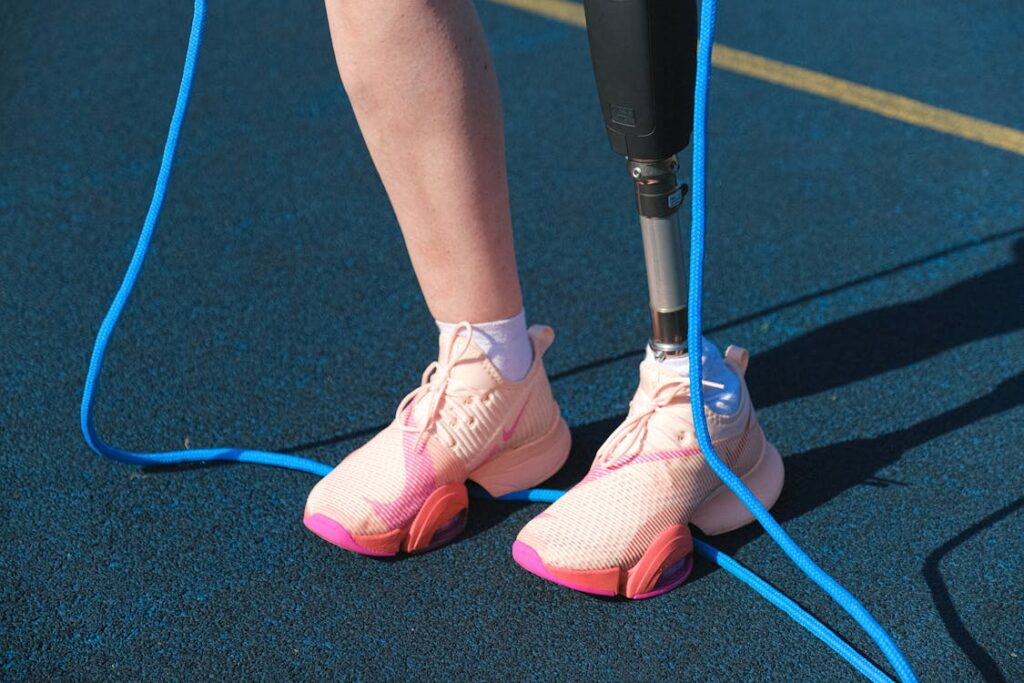
Movement, Play, and Rehab: Supporting Fit Through Activity
Why Active Movement Helps Shape a Better Fit
Children are always in motion. Running, jumping, falling, and getting back up—it’s how they explore the world and develop body awareness.
But did you know that regular movement doesn’t just help with strength and coordination? It also plays a big role in how well a prosthetic limb continues to fit.
When a child stays active, their muscles remain engaged and balanced. This helps the residual limb maintain tone and shape, which supports a better, more stable fit within the socket.
On the other hand, when a child becomes less active—often due to discomfort or a poor-fitting prosthesis—the limb can lose volume or shift shape in small ways that affect the socket’s effectiveness.
That’s why movement and fit go hand-in-hand. The more a child moves, the easier it becomes for the prosthetist to maintain a consistent socket shape.
That consistent movement also helps prevent one of the most common issues in pediatric prosthetics: unexpected volume loss in the residual limb.
Gamified Rehab and Functional Play
Children don’t like boring routines—and they shouldn’t have to. That’s where gamified rehabilitation and structured play come in. At Robobionics, we use home-based rehab games and child-friendly activities to keep young users engaged.
These programs help train coordination, improve balance, and build strength, all while making the child feel like they’re simply playing a game.
But there’s more going on beneath the surface. Every jump, reach, and step helps identify how the prosthetic fits during movement. These sessions become a gentle, ongoing way to monitor comfort, without the pressure of formal assessments.
If a child avoids certain exercises or moves differently during play, it can signal early fitment problems. This allows caregivers and professionals to step in early—sometimes even before the child feels pain or speaks up about it. That’s the power of movement as both a fitness tool and a feedback system.
The Feedback Loop Between Play and Prosthetic Adjustment
Children may not have the language to describe how their prosthesis feels, but they’re always communicating with their actions. When they play freely and move with ease, that’s often the best sign of good fitment.
If they start to favor one side, avoid full movement, or pull at the limb during rest, those signs can guide adjustments before the next clinic visit.
This kind of behavioral feedback helps prosthetists make more targeted changes. Rather than guessing where discomfort is coming from, they can rely on play-based movement patterns to understand how the child is interacting with their prosthetic limb.
It also builds trust. Children who see their comfort improving after being observed in natural play start to trust the process—and the people involved in their care. This makes future rechecks easier and more productive.
Supporting Families to Encourage Safe Exploration
Parents and caregivers sometimes worry about letting children be too active with their prosthesis. They might fear falls, damage, or discomfort. But guided play in a safe environment is one of the most valuable tools a child has for adapting to a prosthesis—and for maintaining a healthy fit.
By encouraging movement, families help children strengthen both their bodies and their confidence. That sense of freedom helps the child feel normal, capable, and excited to use their prosthesis daily.
It also keeps the limb in shape and promotes healthier skin, better muscle tone, and fewer fitment problems in the long run.
Families can work with therapists and prosthetists to choose the right types of activities, whether that’s dancing, obstacle courses, swimming, or climbing.
With the right setup and support, almost anything is possible—and movement becomes part of the care plan, not separate from it.
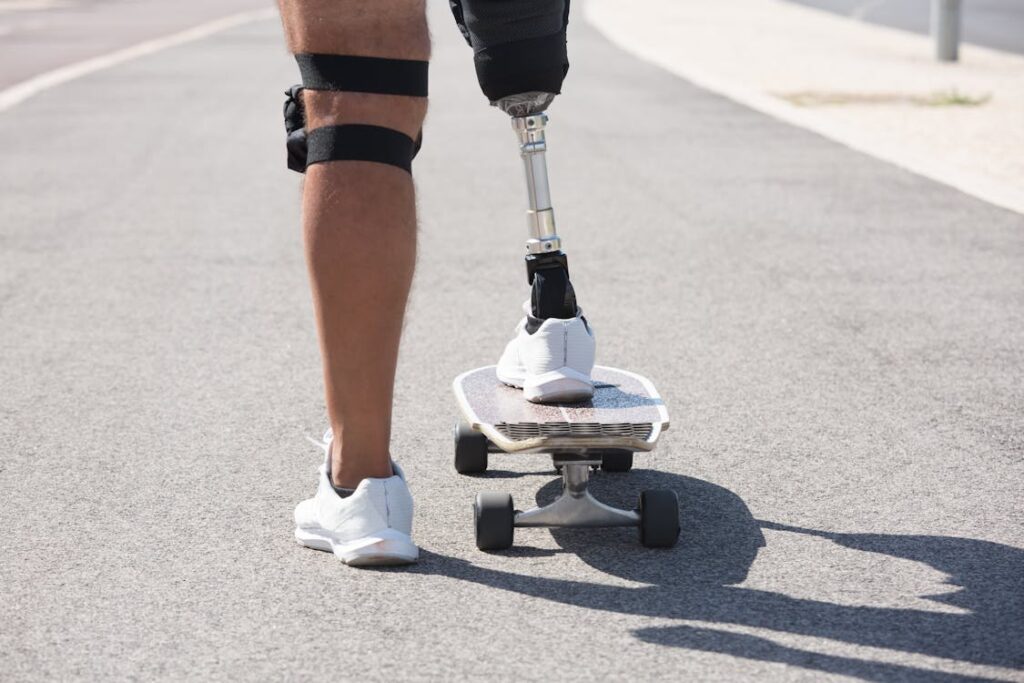
The Puberty Shift: How Hormones Affect Prosthetic Fitment
The Hidden Impact of Hormonal Changes on Limb Fit
When people think about changes during puberty, they often focus on height, voice, or emotions. But behind the scenes, major shifts are happening inside the body—many of which directly affect how a prosthetic limb fits.
These hormonal changes affect everything from muscle development and fat distribution to sweat levels and even skin sensitivity.
For children using prosthetics, puberty marks a critical turning point. The residual limb can grow in unpredictable ways. It might become more muscular, lose fat in one area while gaining it in another, or experience rapid lengthening in bone. This makes maintaining a snug, comfortable socket more complicated than ever.
Some teens experience growth spurts where changes happen literally overnight. A socket that felt perfect yesterday may suddenly feel tight, restrictive, or completely misaligned. During this phase, rechecks may need to happen more often than usual—even monthly, in some cases.
Skin Becomes More Sensitive and Reactive
Puberty doesn’t just change the inside of the body—it also affects the skin. Hormones like estrogen and testosterone can make the skin oilier, more prone to irritation, and more reactive to pressure.
This can lead to increased sweating inside the socket, more friction, and higher chances of rashes or bacterial infections.
Teenagers may feel embarrassed by these changes, or they may try to hide their discomfort. They may stop wearing their prosthesis regularly, not because they want to—but because it suddenly feels hot, itchy, or inflamed. If these concerns aren’t caught early, it can lead to skin breakdown and emotional withdrawal.
This is where empathetic care matters most. During this sensitive time, it’s important to address both the physical discomfort and the emotional stress that comes with rapid changes in the body.
Changing Activity Levels Can Mask Fitment Problems
Puberty often brings new activities into a child’s life. From sports to dance to longer school days, these experiences test the prosthetic in new ways.
Teens might also start commuting alone, carrying heavier bags, or doing more physical labor at home. These new demands highlight how well (or poorly) the limb is functioning.
However, many teens try to “tough it out.” They may not want to draw attention to themselves or seem different from their peers.
Because of this, subtle fitment issues might go unnoticed until they become major problems—like fatigue, joint pain, or a sudden loss of balance.
This makes it even more critical for prosthetists and families to stay proactive. Instead of waiting for discomfort to become visible, regular re-evaluation during puberty helps keep up with the body’s rapid changes and encourages teens to stay engaged in their own care.
Empowering Teens to Take Ownership
As children grow into young adults, they need more than adjustments—they need education and agency. This is the perfect stage to begin involving them more actively in their prosthetic management.
Teaching them how to recognize early signs of poor fit, how to clean and inspect their limb daily, and how to communicate changes empowers them to take control.
At Robobionics, we see adolescence as a bridge. It’s the time when a young user transitions from being a passenger in the care process to becoming the driver.
We believe this is the stage where long-term habits are formed—habits that affect not only fitment, but self-image, independence, and overall health.
By creating a space where teens feel heard, respected, and informed, prosthetists can guide them toward becoming confident users who advocate for their own comfort and functionality.
Conclusion
Growing up with a prosthesis is not just about learning how to walk—it’s about learning how to grow with change. For children, fitment isn’t a one-time solution. It’s a constant journey that needs regular rechecks, thoughtful adjustments, and a team that listens closely to every step, stretch, and growth spurt.
A well-fitted prosthesis allows a child to play, learn, and live without limits. It protects their physical development, supports their emotional well-being, and builds lifelong confidence. When we prioritize regular fitment reviews, we’re not just improving comfort—we’re empowering children to thrive in their own way.
At Robobionics, we believe every child deserves a prosthesis that grows with them—one that supports not just the limb, but the life behind it.



